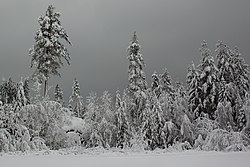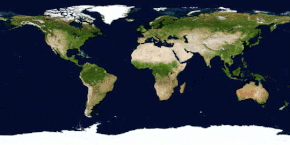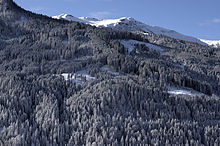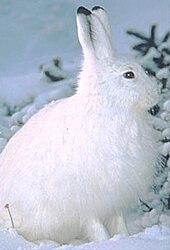MLB Theme by 1_BAD_SOLDIER
Download: MLB.p3t

(2 backgrounds)
Redirect to:
This page is a redirect. The following categories are used to track and monitor this redirect:
|

The #1 spot for Playstation themes!
MLB Theme by 1_BAD_SOLDIER
Download: MLB.p3t

(2 backgrounds)
Redirect to:
This page is a redirect. The following categories are used to track and monitor this redirect:
|
Trippy theme by RsinArt
Download: Trippy.p3t

(3 backgrounds)

Trippy is a social and mobile friend-sourced tool launched in September 2011 founded by technology entrepreneur J.R. Johnson.[1] who also founded Lunch.com, OneTime.com and VirtualTourist which was acquired by Expedia in 2008.
Trippy aims to simplify and improve travel planning through what they call "friend-sourcing."[2][3] The app ties into users' social networks, such as Facebook, to discover which friends, family and contacts have visited the considered destination—whether it be that they've checked-in, lived, worked, or studied there.[4]
Through one-click recommendations and Facebook-style commenting, Trippy lets friends suggest what hotels, restaurants, and destinations would be a good fit.[5] The startup offers an auto-complete tool to quickly pull up what you're looking for — from a database of locations. Users can then add places they're considering so that friends can comment on the itinerary, offering feedback in Facebook-style comment feeds.
After debuting a private beta in September 2011 [6] as a Battlefield Finalist at TechCrunch Disrupt, Trippy launched the open beta of its friend-sourced solution for travel content in October 2011.[7]
On November 15, 2011, Trippy announced its first round of seed funding, equaling $1.75M,[8] co-led by Sequoia Capital and True Ventures. SV Angel also participated, along with individuals including Rob Solomon, Tim Ferriss, Brian Lee, Gil Ebaz, Brandee Barker, Chase Jarvis, Randi Zuckerberg, Jason Mraz, and Rachel Zoe, as well as others.[9] The company announced that the capital would be used to accelerate product development.
Swirls theme by RsinArt
Download: Swirls.p3t

(3 backgrounds)
P3T Unpacker v0.12
Copyright (c) 2007. Anoop Menon
This program unpacks Playstation 3 Theme files (.p3t) so that you can touch-up an existing theme to your likings or use a certain wallpaper from it (as many themes have multiple). But remember, if you use content from another theme and release it, be sure to give credit!
Download for Windows: p3textractor.zip
Instructions:
Download p3textractor.zip from above. Extract the files to a folder with a program such as WinZip or WinRAR. Now there are multiple ways to extract the theme.
The first way is to simply open the p3t file with p3textractor.exe. If you don’t know how to do this, right click the p3t file and select Open With. Alternatively, open the p3t file and it will ask you to select a program to open with. Click Browse and find p3textractor.exe from where you previously extracted it to. It will open CMD and extract the theme to extracted.[filename]. After that, all you need to do for any future p3t files is open them and it will extract.
The second way is very simple. Just drag the p3t file to p3textractor.exe. It will open CMD and extract the theme to extracted.[filename].
For the third way, first put the p3t file you want to extract into the same folder as p3textractor.exe. Open CMD and browse to the folder with p3extractor.exe. Enter the following:
p3textractor filename.p3t [destination path]Replace filename with the name of the p3t file, and replace [destination path] with the name of the folder you want the files to be extracted to. A destination path is not required. By default it will extract to extracted.filename.
Zoo York theme by RsinArt
Download: ZooYork.p3t

(3 backgrounds)
Zoo York may refer to:
X Black theme by emobandit
Download: XBlack.p3t

(1 background)
P3T Unpacker v0.12
Copyright (c) 2007. Anoop Menon
This program unpacks Playstation 3 Theme files (.p3t) so that you can touch-up an existing theme to your likings or use a certain wallpaper from it (as many themes have multiple). But remember, if you use content from another theme and release it, be sure to give credit!
Download for Windows: p3textractor.zip
Instructions:
Download p3textractor.zip from above. Extract the files to a folder with a program such as WinZip or WinRAR. Now there are multiple ways to extract the theme.
The first way is to simply open the p3t file with p3textractor.exe. If you don’t know how to do this, right click the p3t file and select Open With. Alternatively, open the p3t file and it will ask you to select a program to open with. Click Browse and find p3textractor.exe from where you previously extracted it to. It will open CMD and extract the theme to extracted.[filename]. After that, all you need to do for any future p3t files is open them and it will extract.
The second way is very simple. Just drag the p3t file to p3textractor.exe. It will open CMD and extract the theme to extracted.[filename].
For the third way, first put the p3t file you want to extract into the same folder as p3textractor.exe. Open CMD and browse to the folder with p3extractor.exe. Enter the following:
p3textractor filename.p3t [destination path]Replace filename with the name of the p3t file, and replace [destination path] with the name of the folder you want the files to be extracted to. A destination path is not required. By default it will extract to extracted.filename.
Christmas theme 1.0 by CosmicMatrox
Download: Christmas_1.0.p3t

(1 background)
P3T Unpacker v0.12
Copyright (c) 2007. Anoop Menon
This program unpacks Playstation 3 Theme files (.p3t) so that you can touch-up an existing theme to your likings or use a certain wallpaper from it (as many themes have multiple). But remember, if you use content from another theme and release it, be sure to give credit!
Download for Windows: p3textractor.zip
Instructions:
Download p3textractor.zip from above. Extract the files to a folder with a program such as WinZip or WinRAR. Now there are multiple ways to extract the theme.
The first way is to simply open the p3t file with p3textractor.exe. If you don’t know how to do this, right click the p3t file and select Open With. Alternatively, open the p3t file and it will ask you to select a program to open with. Click Browse and find p3textractor.exe from where you previously extracted it to. It will open CMD and extract the theme to extracted.[filename]. After that, all you need to do for any future p3t files is open them and it will extract.
The second way is very simple. Just drag the p3t file to p3textractor.exe. It will open CMD and extract the theme to extracted.[filename].
For the third way, first put the p3t file you want to extract into the same folder as p3textractor.exe. Open CMD and browse to the folder with p3extractor.exe. Enter the following:
p3textractor filename.p3t [destination path]Replace filename with the name of the p3t file, and replace [destination path] with the name of the folder you want the files to be extracted to. A destination path is not required. By default it will extract to extracted.filename.
Winter theme by adam12345
Download: Winter.p3t

(1 background)
| Temperate season | |
|---|---|
 Forest covered in snow during winter | |
| Northern temperate zone | |
| Astronomical season | 22 December – 21 March |
| Meteorological season | 1 December – 28/29 February |
| Solar (Celtic) season | 1 November – 31 January |
| Southern temperate zone | |
| Astronomical season | 21 June – 23 September |
| Meteorological season | 1 June – 31 August |
| Solar (Celtic) season | 1 May – 31 July |
| Summer Spring Winter | |
| Part of a series on |
| Weather |
|---|
|
|
Winter is the coldest and darkest season of the year in polar and temperate climates. It occurs after autumn and before spring. The tilt of Earth's axis causes seasons; winter occurs when a hemisphere is oriented away from the Sun. Different cultures define different dates as the start of winter, and some use a definition based on weather.
When it is winter in the Northern Hemisphere, it is summer in the Southern Hemisphere, and vice versa. Winter typically brings precipitation that, depending on a region's climate, is mainly rain or snow. The moment of winter solstice is when the Sun's elevation with respect to the North or South Pole is at its most negative value; that is, the Sun is at its farthest below the horizon as measured from the pole. The day on which this occurs has the shortest day and the longest night, with day length increasing and night length decreasing as the season progresses after the solstice.
The earliest sunset and latest sunrise dates outside the polar regions differ from the date of the winter solstice and depend on latitude. They differ due to the variation in the solar day throughout the year caused by the Earth's elliptical orbit (see: earliest and latest sunrise and sunset).
The English word winter comes from the Proto-Germanic noun *wintru-, whose origin is unclear. Several proposals exist, a commonly mentioned one connecting it to the Proto-Indo-European root *wed- 'water' or a nasal infix variant *wend-.[1]
The tilt of the Earth's axis relative to its orbital plane plays a large role in the formation of weather. The Earth is tilted at an angle of 23.44° to the plane of its orbit, causing different latitudes to directly face the Sun as the Earth moves through its orbit. This variation brings about seasons. When it is winter in the Northern Hemisphere, the Southern Hemisphere faces the Sun more directly and thus experiences warmer temperatures than the Northern Hemisphere. Conversely, winter in the Southern Hemisphere occurs when the Northern Hemisphere is tilted more toward the Sun. From the perspective of an observer on the Earth, the winter Sun has a lower maximum altitude in the sky than the summer Sun.
During winter in either hemisphere, the lower altitude of the Sun causes the sunlight to hit the Earth at an oblique angle. Thus a lower amount of solar radiation strikes the Earth per unit of surface area. Furthermore, the light must travel a longer distance through the atmosphere, allowing the atmosphere to dissipate more heat. Compared with these effects, the effect of the changes in the distance of the Earth from the Sun (due to the Earth's elliptical orbit) is negligible.
The manifestation of the meteorological winter (freezing temperatures) in the northerly snow-prone latitudes is highly variable, depending on elevation, position versus marine winds, and the amount of precipitation. For instance, within Canada (a country of cold winters), Winnipeg, on the Great Plains (a long way from the ocean), has a January high of −11.3 °C (11.7 °F) and a low of −21.4 °C (−6.5 °F).[2]
In comparison, Vancouver, on the west coast (with a marine influence from moderating Pacific winds), has a January low of 1.4 °C (34.5 °F), with days well above freezing, at 6.9 °C (44.4 °F).[3] Both places are at 49°N latitude and in the same western half of the continent. A similar but less extreme effect is found in Europe: in spite of their northerly latitude, the British Isles have not a single non-mountain weather station with a below-freezing mean January temperature.[4]

Meteorological reckoning is the method of measuring the winter season used by meteorologists based on "sensible weather patterns" for record keeping purposes,[5] so the start of meteorological winter varies with latitude.[6] Winter is often defined by meteorologists to be the three calendar months with the lowest average temperatures. This corresponds to the months of December, January and February in the Northern Hemisphere, and June, July and August in the Southern Hemisphere.
The coldest average temperatures of the season are typically experienced in January or February in the Northern Hemisphere and in June, July or August in the Southern Hemisphere. Nighttime predominates in the winter season, and in some regions, winter has the highest rate of precipitation as well as prolonged dampness because of permanent snow cover or high precipitation rates coupled with low temperatures, precluding evaporation. Blizzards often develop and cause many transportation delays. Diamond dust, also known as ice needles or ice crystals, forms at temperatures approaching −40 °C (−40 °F) due to air with slightly higher moisture from above mixing with colder, surface-based air.[7] They are made of simple hexagonal ice crystals.[8]
The Swedish Meteorological Institute (SMHI) defines thermal winter as when the daily mean temperatures are below 0 °C (32 °F) for five consecutive days.[9] According to the SMHI, winter in Scandinavia is more pronounced when Atlantic low-pressure systems take more southerly and northerly routes, leaving the path open for high-pressure systems to come in and cold temperatures to occur. As a result, the coldest January on record in Stockholm, in 1987, was also the sunniest.[10][11]
Accumulations of snow and ice are commonly associated with winter in the Northern Hemisphere, due to the large land masses there. In the Southern Hemisphere, the more maritime climate and the relative lack of land south of 40°S make the winters milder; thus, snow and ice are less common in inhabited regions of the Southern Hemisphere. In this region, snow occurs every year in elevated regions such as the Andes, the Great Dividing Range in Australia, and the mountains of New Zealand, and also in the southerly Patagonia region of South Argentina. Snow occurs year-round in Antarctica.



In the Northern Hemisphere, some authorities define the period of winter based on astronomical fixed points (i.e., based solely on the position of the Earth in its orbit around the Sun), regardless of weather conditions. In one version of this definition, winter begins at the winter solstice and ends at the March equinox.[12] These dates are somewhat later than those used to define the beginning and end of the meteorological winter — usually considered to span the entirety of December, January, and February in the Northern Hemisphere and June, July, and August in the Southern.[12][13]
Astronomically, the winter solstice — being the day of the year that has fewest hours of daylight — ought to be in the middle of the season,[14][15] but seasonal lag means that the coldest period normally follows the solstice by a few weeks. In some cultures, the season is regarded as beginning at the solstice and ending on the following equinox.[16][17] In the Northern Hemisphere, depending on the year, this corresponds to the period between 20, 21 or 22 December and 19, 20 or 21 March.[12]
In an old Norwegian tradition, winter begins on 14 October and ends on the last day of February.[18]
In many countries in the Southern Hemisphere, including Australia,[19][20] New Zealand,[21] and South Africa, winter begins on 1 June and ends on 31 August.
In Celtic nations such as Ireland (using the Irish calendar) and in Scandinavia, the winter solstice is traditionally considered as midwinter, with the winter season beginning 1 November, on All Hallows, or Samhain.[citation needed] Winter ends and spring begins on Imbolc, or Candlemas, which is 1 or 2 February.[22] In Chinese astronomy and other East Asian calendars, winter is taken to commence on or around 7 November, on Lìdōng, and end with the arrival of spring on 3 or 4 February, on Lìchūn.[23] Late Roman Republic scholar Marcus Terentius Varro defined winter as lasting from the fourth day before the Ides of November (10 November) to the eighth day before the Ides of Februarius (6 February).[24]
This system of seasons is based on the length of days exclusively. The three-month period of the shortest days and weakest solar radiation occurs during November, December and January in the Northern Hemisphere and May, June and July in the Southern Hemisphere.
Many mainland European countries tended to recognize Martinmas or St. Martin's Day (11 November) as the first calendar day of winter.[25] The day falls at the midpoint between the old Julian equinox and solstice dates. Also, Valentine's Day (14 February) is recognized by some countries as heralding the first rites of spring, such as flowers blooming.[26]
The three-month period associated with the coldest average temperatures typically begins somewhere in late November or early December in the Northern Hemisphere and lasts through late February or early March. This "thermological winter" is earlier than the solstice delimited definition, but later than the daylight (Celtic or Chinese) definition. Depending on seasonal lag, this period will vary between climatic regions.
Since by almost all definitions valid for the Northern Hemisphere, winter spans 31 December and 1 January, the season is split across years, just like summer in the Southern Hemisphere. Each calendar year includes parts of two winters. This causes ambiguity in associating a winter with a particular year, e.g. "Winter 2018". Solutions for this problem include naming both years, e.g. "Winter 18/19", or settling on the year the season starts in or on the year most of its days belong to, which is the later year for most definitions.

Ecological reckoning of winter differs from calendar-based by avoiding the use of fixed dates. It is one of six seasons recognized by most ecologists who customarily use the term hibernal for this period of the year (the other ecological seasons being prevernal, vernal, estival, serotinal, and autumnal).[27] The hibernal season coincides with the main period of biological dormancy each year whose dates vary according to local and regional climates in temperate zones of the Earth. The appearance of flowering plants like the crocus can mark the change from ecological winter to the prevernal season as early as late January in mild temperate climates.
To survive the harshness of winter, many animals have developed different behavioral and morphological adaptations for overwintering:
Some annual plants never survive the winter. Other annual plants require winter cold to complete their life cycle; this is known as vernalization. As for perennials, many small ones profit from the insulating effects of snow by being buried in it. Larger plants, particularly deciduous trees, usually let their upper part go dormant, but their roots are still protected by the snow layer. Few plants bloom in the winter, one exception being the flowering plum, which flowers in time for Chinese New Year. The process by which plants become acclimated to cold weather is called hardening.


White 1.0 theme by CosmicMatrox
Download: White_1.0.p3t

(1 background)
P3T Unpacker v0.12
Copyright (c) 2007. Anoop Menon
This program unpacks Playstation 3 Theme files (.p3t) so that you can touch-up an existing theme to your likings or use a certain wallpaper from it (as many themes have multiple). But remember, if you use content from another theme and release it, be sure to give credit!
Download for Windows: p3textractor.zip
Instructions:
Download p3textractor.zip from above. Extract the files to a folder with a program such as WinZip or WinRAR. Now there are multiple ways to extract the theme.
The first way is to simply open the p3t file with p3textractor.exe. If you don’t know how to do this, right click the p3t file and select Open With. Alternatively, open the p3t file and it will ask you to select a program to open with. Click Browse and find p3textractor.exe from where you previously extracted it to. It will open CMD and extract the theme to extracted.[filename]. After that, all you need to do for any future p3t files is open them and it will extract.
The second way is very simple. Just drag the p3t file to p3textractor.exe. It will open CMD and extract the theme to extracted.[filename].
For the third way, first put the p3t file you want to extract into the same folder as p3textractor.exe. Open CMD and browse to the folder with p3extractor.exe. Enter the following:
p3textractor filename.p3t [destination path]Replace filename with the name of the p3t file, and replace [destination path] with the name of the folder you want the files to be extracted to. A destination path is not required. By default it will extract to extracted.filename.
Shinra theme by De-mon
Download: shinra.p3t

(3 backgrounds)
Shinra may refer to: